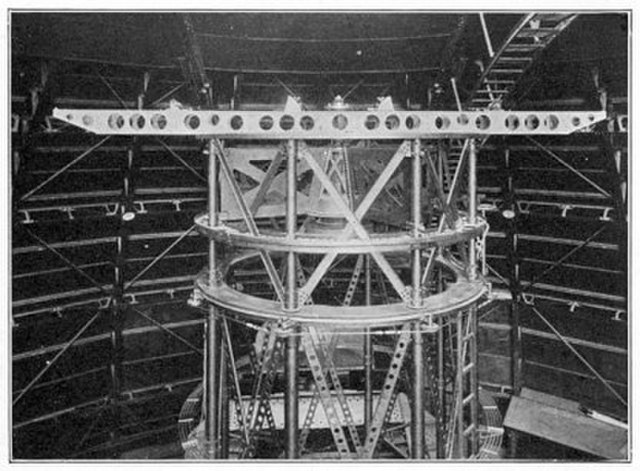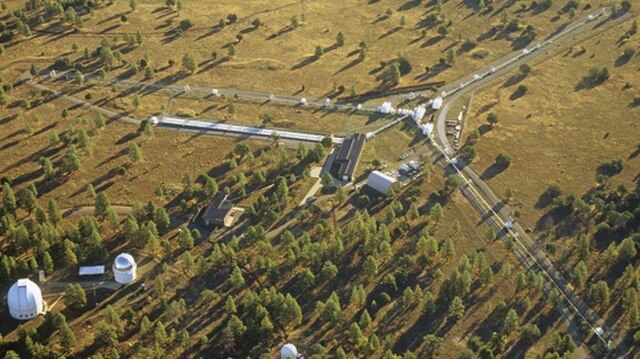Very-long-baseline interferometry
Very-long-baseline interferometry (VLBI) is a type of astronomical interferometry used in radio astronomy. In VLBI a signal from an astronomical radio source, such as a quasar, is collected at multiple radio telescopes on Earth or in space. The distance between the radio telescopes is then calculated using the time difference between the arrivals of the radio signal at different telescopes. This allows observations of an object that are made simultaneously by many radio telescopes to be combined, emulating a telescope with a size equal to the maximum separation between the telescopes.
Some of the Atacama Large Millimeter Array radio telescopes.
The eight radio telescopes of the Smithsonian Submillimeter Array, located at the Mauna Kea Observatory in Hawai'i.
VLBI was used to create the first image of a black hole, imaged by the Event Horizon Telescope and published in April 2019.
Image of the source IRC +10420. The lower resolution image on the left was taken with the UK's MERLIN array and shows the shell of maser emission produced by an expanding shell of gas with a diameter about 200 times that of the Solar System. The shell of gas was ejected from a supergiant star (10 times the mass of the Sun) at the centre of the emission about 900 years ago. The corresponding EVN e-VLBI image (right) shows the much finer structure of the masers made visible with the higher resolution of the VLBI array.
Astronomical interferometer
An astronomical interferometer or telescope array is a set of separate telescopes, mirror segments, or radio telescope antennas that work together as a single telescope to provide higher resolution images of astronomical objects such as stars, nebulas and galaxies by means of interferometry. The advantage of this technique is that it can theoretically produce images with the angular resolution of a huge telescope with an aperture equal to the separation, called baseline, between the component telescopes. The main drawback is that it does not collect as much light as the complete instrument's mirror. Thus it is mainly useful for fine resolution of more luminous astronomical objects, such as close binary stars. Another drawback is that the maximum angular size of a detectable emission source is limited by the minimum gap between detectors in the collector array.
ESO's VLT interferometer took the first detailed image of a disc around a young star.
A 20-foot Michelson interferometer mounted on the frame of the 100-inch Hooker Telescope, 1920.
Aerial view of the ESO/NAOJ/NRAO ALMA construction site.
The Navy Precision Optical Interferometer (NPOI), a 437 ma baselined optical/near-infrared, 6-beam Michelson Interferometer at 2163 m elevation on Anderson Mesa in Northern Arizona, USA. Four additional 1.8-meter telescopes are being installed starting from 2013.








